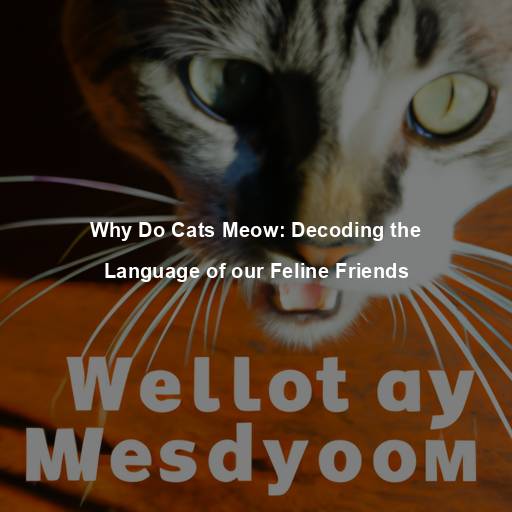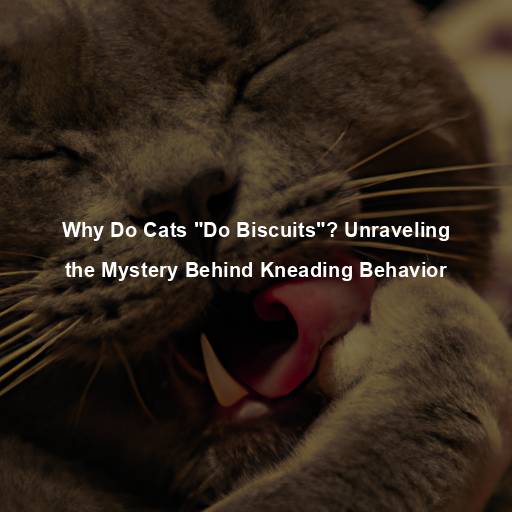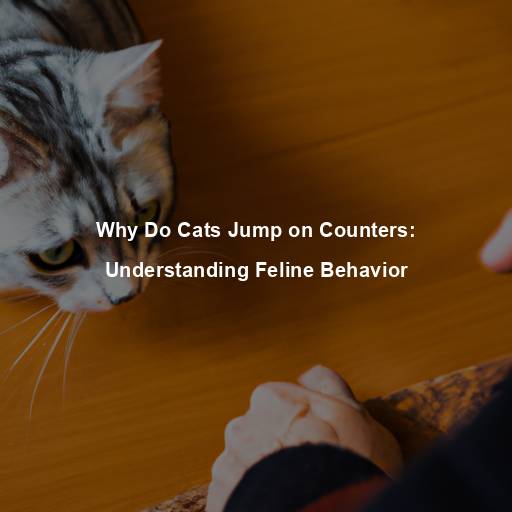Why Do Cats Meow: Decoding the Language of our Feline Friends
Last Updated on July 8, 2023 by Evan
Contents [hide]
- 1 Understanding the Mysterious Meow
- 2 The Various Types of Meows
- 3 The Power of Vocalization
- 4 Communicating with our Cats
- 5 The Unspoken Language of Love
- 6 Embracing the Mystery of Meows
- 7 Decoding the Meow: Factors to Consider
- 8 Myths and Misconceptions
- 9 Tips for Effective Communication
- 10 FAQs for the topic: Why Do Cats Meow
- 10.1 Why do cats meow?
- 10.2 Do cats meow only at humans?
- 10.3 When do cats start meowing?
- 10.4 Are there different types of meows?
- 10.5 Can cats meow for no reason?
- 10.6 Can cats meow to manipulate humans?
- 10.7 Can cats meow in different ways for different owners?
- 10.8 Do male and female cats meow differently?
Understanding the Mysterious Meow
Cats have always been known for their enigmatic and independent nature. They possess a repertoire of sounds that they use to communicate with their human companions and fellow felines. Among these vocalizations, the meow stands out as one of the most common and recognizable. But have you ever wondered why cats meow and what they are trying to convey?
The Evolutionary Roots of Meowing
Did you know that the history of our domesticated feline friends stretches back an astonishing 4,000 years? It’s simply mind-boggling to think about the origins of these majestic creatures, believed to have descended from their untamed ancestors like the African wildcat. What’s even more perplexing is that while their wild relatives communicate using a range of vocalizations, meowing seems to be a unique behavior developed exclusively by our beloved house cats. This tantalizing observation sparks a fascinating question: could meowing have evolved as a way for our furry companions to forge a closer bond with humans?
The Various Types of Meows
Understanding the various types of meows and their possible meanings can deepen our connection with cats and help us provide better care for them. Responding to meows with empathy, paying attention to body language, and seeking professional guidance when necessary are all important aspects of effective communication with cats.
The Attention-Seeking Meow
One of the most common reasons why cats meow is to grab our attention. Whether it’s a soft, gentle meow or a persistent, demanding one, our feline friends have mastered the art of vocalization to ensure we notice them. They may meow when they want to be fed, when they desire some playtime, or simply when they crave affection and want our undivided attention.
The Greeting Meow
When you return home after a long day, have you noticed your cat greeting you with a meow? This friendly meow is their way of acknowledging your presence and expressing their excitement at seeing you. It’s their version of saying, “Welcome back, human”!
The Vocalization of Discomfort
When it comes to feline health, cats truly have a talent for concealing their discomfort. However, there comes a point when their mysterious facade crumbles, and they reveal their distress through an unexpected avenue: meowing. If your furry friend unleashes an unusual chorus of meows, it’s time to unravel the enigma and seek professional advice from a veterinarian to ensure their well-being isn’t obscured by a hidden health concern.
The Mating Call
When female cats experience the enchanting season of heat, they unleash a mesmerizing symphony of meows that can be both captivating and overwhelming. This passionate vocalization, with its unwavering intensity and relentless repetition, serves as a siren call to potential mates. Though it may test the patience of cat owners, it’s important to remember that this fervent display is simply a part of the feline’s innate drive to procreate.
The Power of Vocalization
Cats and Human Language
Although cats cannot comprehend human language in the same way we do, they possess an incredible ability to associate certain sounds with specific actions or events. If you consistently use a particular phrase or word when feeding your cat, for example, they may start to associate that sound with mealtime and use their meows to remind you of their hunger.
Emotional Expression through Meowing
Much like us, cats possess a complex emotional spectrum that manifests through their distinctive meows. When a cat is at ease and content, its meow takes on a gentle and melodious tone, while a cat feeling scared or uneasy might unleash a distressed, high-pitched meow. Deciphering these subtle differences in vocalizations can offer insight into their emotional well-being, allowing us to offer the necessary support and solace.
Individuality in Meows
When it comes to cats and their vocalizations, it’s a mixed bag of surprises. Each precious feline has its own symphony of sounds, and if you’re an observant cat parent, you might just crack the code of their meows. Some kitties bring a whole new meaning to the word “meow” with their delightful chirps and trills, while others could give Barry White a run for his money with their deep, melodic meows. These distinctive vocal styles add an extra layer of enchantment to our already captivating feline companions.
Communicating with our Cats
Paying Attention to Body Language
Communication with our feline friends can be a puzzling journey. Although meowing plays a significant role in their captivating language, we mustn’t overlook the complexity of their non-verbal cues. From subtle shifts in body language to the ever-changing expressions on their whimsical faces, cats have an intricate way of expressing themselves. By unraveling these enigmatic signals, we can unlock a deeper connection with our beloved feline companions.
Responding to Meows
When your cat meows, it is an invitation to engage in a conversation. Responding to their meows with gentle words and acknowledgment can strengthen the bond between you and your feline friend. However, it’s essential to avoid reinforcing unwanted behavior by rewarding excessive or demanding meowing. Instead, focus on positive reinforcement and rewarding desired behaviors such as quietness or patience.
Seeking Professional Guidance
If your cat’s meowing becomes excessive, persistent, or out of character, it is advisable to consult with a veterinarian or a feline behavior specialist. They can help identify any underlying medical conditions or behavioral issues that may be causing the change in vocalization patterns. Professional guidance can provide valuable insights and strategies for managing and addressing these concerns.
The Unspoken Language of Love
The Meow as an Expression of Love
While the meow serves as a functional means of communication for cats, it also acts as a powerful tool for forging an emotional connection with their human companions. When your cat meows affectionately or purrs while rubbing against you, it is a testament to the trust and love they have for you. These subtle gestures speak volumes about the bond you share.
Fostering a Strong Connection
To strengthen the bond with your cat, it’s essential to create an environment that nurtures their emotional well-being. Providing them with a safe and stimulating space, engaging in interactive play sessions, and offering regular affection and attention can go a long way in fostering a strong and loving connection.
Embracing the Mystery of Meows
Cats have an innate ability to captivate us with their intriguing behaviors and mysterious vocalizations. While we may never fully decode the language of our feline friends, understanding the various types of meows and their possible meanings allows us to deepen our connection and provide better care for these enigmatic creatures. So the next time your cat meows, take a moment to listen, observe, and appreciate the unspoken language of love that they share with us. ## The Social Aspect of Meowing
Meowing as a Form of Social Interaction
Cats, intriguing social creatures that they are, have this interesting habit of meowing, which seems to serve a multitude of purposes in their intricate web of connections. In households with multiple feline residents, the meows exchanged between them act as a form of communication, a language that goes beyond mere sounds. These meows serve as greetings, marking the boundaries of territories, and expressing hierarchies, subtly revealing the dynamics of dominance and submission. It is through unraveling the significance of these meows that we can truly grasp the intricate tapestry of feline social interactions, making us appreciate the nuanced complexity of their relationships.
Meowing for Attention in Multi-Cat Homes
In households with multiple cats, meowing can also serve as a way for individual cats to assert their needs and claim attention. Each cat may have a unique meow that they use to signal their desires, whether it’s for food, playtime, or a cozy spot to rest. Recognizing and responding to these individual vocalizations can help maintain harmony among our feline companions.
Decoding the Meow: Factors to Consider
Context and Timing
When it comes to decoding the enigmatic language of our feline companions, one must unravel a tapestry woven with contextual cues and timely utterances. A cat’s meow, shrouded in mystery, holds within it whispers of deeper meaning. Perhaps, as their vocalizations dance near the proximity of their food bowl, hunger runs rampant in their tiny frames. Or perchance, when their gaze fixates upon the world beyond the windowpane, their melodic meow paints a portrait of longing to explore the great outdoors.
Tone and Pitch
Have you ever wondered what your feline friend is trying to tell you with their meows? It turns out that the tone and pitch of their meow can provide valuable clues about their emotional well-being. A sweet, delicate meow is often a sign of pure bliss or a subtle plea for your undivided attention. On the other hand, a bold and forceful meow could be expressing frustration or a touch of dissatisfaction.
Body Language
While meows are an essential part of a cat’s communication, they are often accompanied by subtle body language cues. Observing your cat’s posture, tail position, and ear movements can help provide a more comprehensive understanding of their message. For instance, a cat meowing with an arched back and puffed-up tail may be expressing aggression or fear, while a relaxed body posture may indicate a more amicable intention.
Myths and Misconceptions
Cats Meow Only to Manipulate Humans
It’s a common misconception that cats meow just to manipulate us, but this couldn’t be further from the truth. Meowing is a complex form of communication for our feline friends, serving multiple purposes beyond just getting our attention. Just like humans use words to express their needs, emotions, and desires, cats use meows to convey their own messages, creating a unique language of their own. Don’t underestimate the power of these seemingly innocent meows; they hold a world of meaning to our furry companions.
All Meows Are the Same
When it comes to our feline friends, each meow holds a mysterious message waiting to be decrypted. The enigmatic language of their meows is composed of a multitude of meanings, intricately woven within their unique personalities and the surrounding circumstances. To truly comprehend their feline discourse, it is imperative to attune ourselves to the nuances of body language, timing, and an amalgamation of other variables. Dissolving the notion of uniformity in meows will unravel a world of untold messages, avoiding the pitfalls of misinterpretation and cultivating a deeper connection with our furry companions.
Tips for Effective Communication
Active Listening
To establish effective communication with your cat, it is essential to practice active listening. This involves giving your full attention to their meows, observing their body language, and responding appropriately. By actively engaging with your cat, you can build a stronger bond and create a more harmonious living environment.
Responding with Empathy
Just as humans appreciate empathy in their interactions, cats also respond positively to empathetic responses. When your cat meows, try to respond with kindness and understanding. Acknowledge their needs and provide the necessary support or attention. This empathetic approach can foster trust and deepen the emotional connection between you and your feline companion.
Consistency and Routine
Cats thrive on routine and predictability. Establishing a consistent schedule for feeding, playtime, and other activities can help reduce anxiety and confusion. By following a regular routine, your cat will learn to associate specific meows with certain events, making communication more efficient and meaningful.
FAQs for the topic: Why Do Cats Meow
Why do cats meow?
Have you ever wondered why cats have such a peculiar way of conversing with us? Well, here’s the scoop! When our feline friends let out those distinct meows, they are actually engaging in one of the many fascinating communication tactics they possess. Whether it’s their adorable attempt to catch our attention, a subtle expression of their wants and needs, or even an attempt to bridge the language gap between humans and animals, these meows hold a myriad of meanings that keep us guessing. From hunger pangs to the yearning for affection, our furry companions have their own unique dialect to convey their desires and discomforts. It’s a perplexing yet endearing form of communication that never ceases to fascinate us!
Do cats meow only at humans?
While cats primarily meow to communicate with humans, they can also meow at other animals, especially during confrontations or territory disputes with other cats. However, the frequency and intensity of meowing towards humans are generally more frequent and varied as they have learned that it often produces the desired response.
When do cats start meowing?
Kittens usually meow a lot when they are very young, specifically to communicate with their mother. As they grow older and start interacting more with humans and their environment, they may continue meowing to get attention or express their needs. However, meowing habits can vary greatly among individual cats. Some cats may continue meowing frequently throughout their lives, while others may become more quiet and reserved as they age.
Are there different types of meows?
Yes, cats have different types of meows that can convey various messages and emotions. For example, a short, high-pitched meow can indicate excitement or a greeting, whereas a long, drawn-out meow may suggest frustration, discomfort, or a demand for attention. Some cats even develop unique meows that their owners come to recognize as specific requests or expressions.
Can cats meow for no reason?
Cats, those enigmatic creatures of feline grace, have long baffled and bewitched us with their mysterious meows. Often, we believe their vocalizations are purposeful and deliberate, a means of conveying a message or a desire. Yet, there are moments when their meows seem to defy all reason, leaving us to wonder: what is the meaning behind this perplexing behavior? Could it be boredom, a longing for companionship, or an insatiable yearning for attention? Perhaps it is simply a matter of their innate nature, some cats being naturally more inclined to vocalize than others. Nevertheless, when our feline friends unleash a symphony of meows that surpasses the boundaries of normality, it is wise to delve into the depths of their well-being, seeking any hidden ailments that may be the source of this frenzied vocal outburst. A consultation with a trusted veterinarian may be in order, for behind the veil of these enigmatic meows may lie a deeper truth, a message only decipherable by the experts in feline care. So, let us embark upon this journey of curiosity and concern, as we attempt to unravel the enigma of the meowing cat.
Can cats meow to manipulate humans?
Cats are known to be very skilled at manipulating humans through their meowing behavior. They have learned that certain sounds or behaviors tend to evoke particular responses from their owners, such as providing food or attention. Cats may use their meows strategically to get what they want, whether it’s asking for treats, wanting to play, or seeking immediate gratification.
Can cats meow in different ways for different owners?
While cats often adjust their meowing behavior to get the desired response from their owners, it’s not necessarily common for them to meow differently specifically for different individuals. Cats tend to develop a consistent vocalization pattern that they associate with their specific needs or messages, which they use with anyone they feel can help fulfill those needs. However, the intensity, frequency, or urgency of their meows may vary depending on their relationship with a particular person or their experiences with them.
Do male and female cats meow differently?
Male and female cats do not have inherent differences in their meowing patterns, tone, or volume solely based on their gender. Meowing behavior is primarily influenced by factors such as genetics, individual personality, and life experiences. However, intact male cats (unneutered) may display more intense and persistent meowing as a way of attracting females during mating season.







